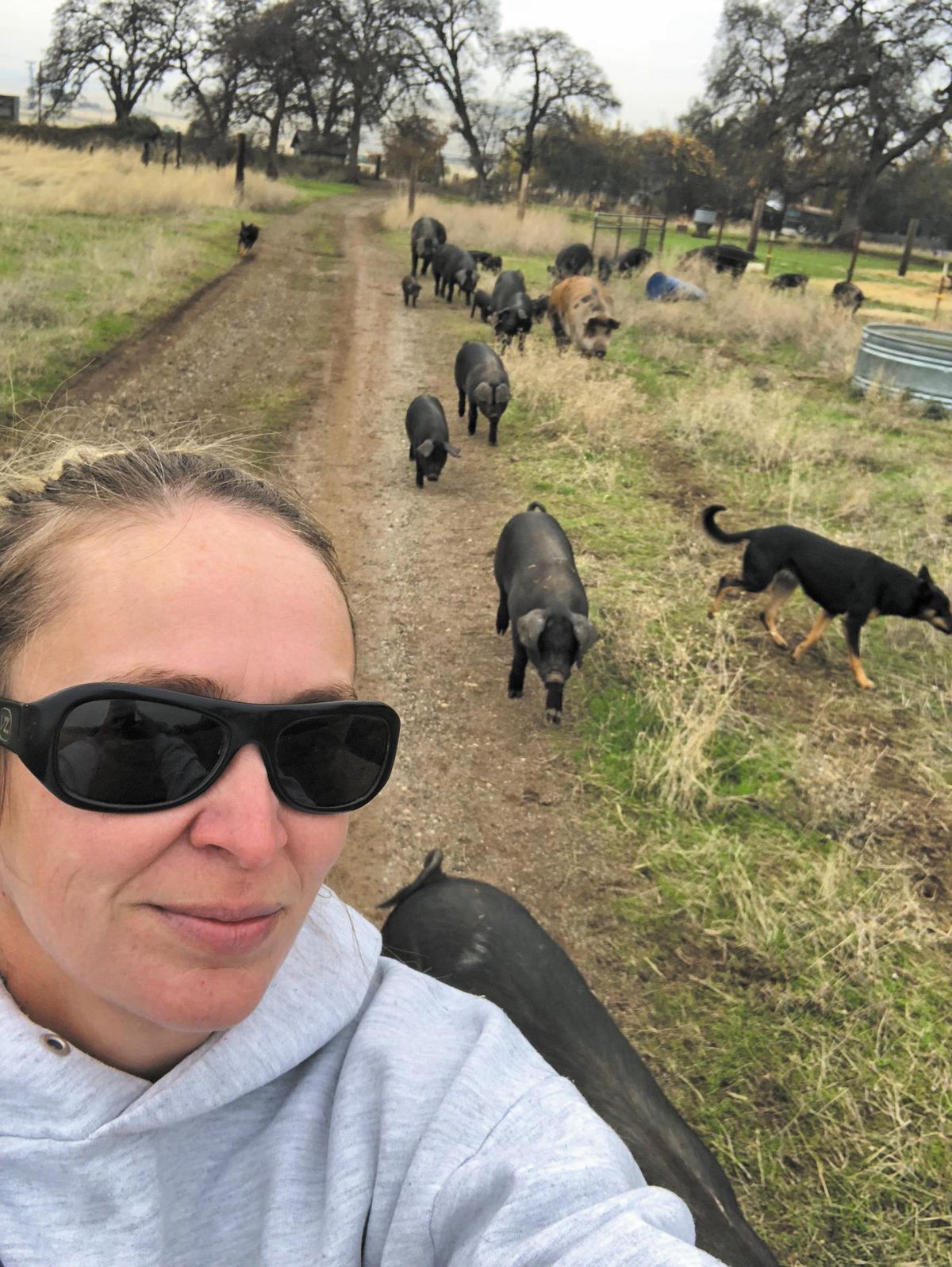
Photo courtesy of Megan Brown
Megan Brown had to put down her boar Itty Bitty (pictured at center) after a bear attacked and critically injured him this past December.
Lyndi Wade woke with a start around 2 a.m. on Aug. 2 to the sound of screaming horses at her boarding facility, Wade Arena. She did some investigating, “running around [the ranch] with no gun, just a flashlight and my slippers.”
After speaking with other folks at the ranch, she determined that a gunshot must have spooked them, and went back to bed. The next morning, however, a boarder found scratches on her horse’s rear, and there were mountain lion tracks nearby. The mare’s colt was trampled during the attack, and had to be put down.
Wade said she was shocked by the incident. Her family has owned the property, at the intersection of highways 191 and 70, for 40 years. “We’ve never had [mountain lions] here. But I guess now we’ve got to expect them,” she said. “It’s got everybody on high alert.”
Wade isn’t the only rancher in the Butte Valley area who has experienced an unexpected predator sighting lately. Several folks who spoke with the CN&R reported coming across bears and mountain lions. In each case, the ranchers expressed concern over the animals’ proximity to their livestock and homes, and said they believed this year has been markedly different because of the Camp Fire, which destroyed the upper portion of the Miocene Canal. PG&E, which owns the upper and middle portions, has since shut the canal down. All 25 miles of it, from Magalia to Oroville, have run dry.
The animals are thirsty, Wade suspects, because “there’s no water out here,” she told the CN&R.
In the past month or so there have been more bear- and mountain lion-related reports east and south of Chico, said Jason Holley, supervising wildlife biologist for the California Department of Fish and Wildlife’s (CDFW) north central region, “but it’s nothing out of the ordinary.” The department is not aware of any significant population increases in the area, he continued.
“Every summer we have different hot spots throughout Northern California,” he told the CN&R.
Black bears and mountain lions have always resided in Butte Valley, Holley said.
“This time of year, this elevation always dries out and gets brown and wildlife have to adapt and get resources,” he said.
He urged residents to report sightings directly to CDFW (see infobox). Then the agency can work with folks to develop plans to deter predators. This includes fencing and proper garbage containment, and in some cases the issuance of depredation permits, which allow property owners to kill an animal.
Local residents aren’t convinced there hasn’t been an increase. They are worried their encounters are yet another consequence of the fire that will only get worse.
Gail Tozier, who has raised cattle in Butte Valley for 16 years, said she is concerned for the safety of her livestock, family and neighbors. Her husband spotted a bear with three cubs when he was checking on the cattle about three weeks ago. They also recently spotted a mountain lion sprinting through their property while being chased by a coyote. Tozier said it’s typical to see turkeys, deer, skunks and coyotes. But mountain lions and bears are “a rarity.”
“The coyote had a litter of pups. … My husband said he’s never seen two animals run so fast in his life,” she said. “If they’re going after [coyote] pups, they’re going to go after dogs and kids and chickens and cats and goats and sheep.”
One morning in December, rancher Megan Brown discovered a portion of the electric fence protecting her pig pen at Table Mountain Ranch in Oroville had been destroyed. Further investigation uncovered blood, bear tracks and droppings. Her boar Itty Bitty was wounded, his hip broken. After a few weeks passed, he still couldn’t put pressure on his back leg.
“The most humane thing to do was put him out of his misery,” she said.
Brown said local ranchers understand the risks that come with their livelihoods and where they live, and she has taken steps to minimize those risks: In addition to the electric fence, she has two great Pyrenees livestock guardian dogs and four cowdogs.
“I have a loaded rifle by my bed. I sleep with my windows open so if I hear a screaming pig I can get up there [to the pen] and at least save it or kill it if it’s suffering too much,” she said.
After the attack, Brown, who has a hunting license, purchased a bear tag to kill the predator. And she did just that when it returned less than a week later. Now that the bear is gone, she’s come across another problem: In July, two of her butchering pigs and a 900-pound sow went missing.
“They don’t disappear. And even if they do die, you find the bodies,” Brown said. “That makes me think they’re being eaten.”
Since the canal was shut off, the springs and streams on her land dried up. The only source of open water on her property is the trough she uses for her pigs. Brown said she encourages folks to co-exist with bears because they are part of the ecosystem, “but normally they mind their manners.”
“I think with the fires and the stress and no water, they’re moving lower; they’re a little hungrier, they’re a little thirstier,” she said. “We watched the fire destroy our lands and homes and now we’re watching the drought destroy all the flora and fauna. It’s psychological horror and [my] hair is starting to fall out. … Everybody is a hot mess.”
